Mustard is a type of condiment used in many dishes around the world. It’s made from ground mustard seeds and can range in flavor from sweet to spicy. Mustard is essential in many recipes, including sauces, marinades, and dressings. Here is everything you wanted to know about Mustard and How to Plant, Grow, and Harvest Mustard Greens :
What is Mustard?
Mustard is an ancient condiment made from ground mustard seeds and other ingredients such as vinegar, salt, and spices. It comes in various colors, textures, and flavors, ranging from mild to hot. Mustard has been used for centuries to add flavor and spice to food dishes. Whether it’s yellow American-style mustard or Dijon mustard with a hint of honey, it’s an essential ingredient in sauces, dressings, marinades, dips, sandwiches & much more.
History and Origin of Mustard:
Mustard is believed to have originated in the Middle East about 4,000 years ago. By the 6th century BC, it had spread to India, Greece, and Rome. The Romans introduced mustard cultivation to Europe, and by the 16th century AD, it was a popular condiment across Europe. In 1777, an English chemist created the first commercial mustard brand sold as a powder mixture that could be mixed with water or vinegar to make a paste.
Types of Mustard:
Mustard comes in a variety of shapes and sizes. Here are some of the more popular types:
- Yellow Mustard – This is the classic American-style mustard. It’s made from yellow mustard seeds and has a mild, sharp flavor.
- Dijon Mustard – This type of mustard is made with white wine, vinegar, and spices for a richer flavor than yellow mustard.
- Honey Mustard – Honey mustard is sweetened with honey to give it a subtle sweetness. It can be used as a dressing or dip.
- Spicy Brown Mustard – Spicy brown mustard has a bolder taste than yellow or Dijon mustard, thanks to the addition of spices like horseradish.
- Whole-Grain Mustard – Whole-grain mustard is made from coarsely ground mustard seeds and has a strong, tangy flavor.
Health Benefits of Mustard:
Mustard has been used for medicinal purposes throughout history. Mustard is a great source of selenium, magnesium, iron, and calcium, which all help to support our body’s natural healing processes. It has also been found to have anti-inflammatory properties that can help reduce inflammation in the body and provide antioxidant protection from free radicals. Mustard can also help improve digestion, containing dietary fiber and probiotics.
Finally, mustard can aid in weight loss due to its high fiber and low-calorie content. Furthermore, some studies have even suggested that consuming mustard may reduce the risk of certain cancers. All in all, there are many health benefits associated with eating mustard!
So go ahead and add a little spice to your life – try adding a spoonful of mustard to your favorite dishes today.
Different Uses of Mustard:
Mustard is an incredibly versatile ingredient with various uses in the kitchen and beyond.
- In the Kitchen: Mustard is a popular condiment for sandwiches, hot dogs, hamburgers, salads, and many other foods. It can also be used as a marinade for meat or vegetables, added to dressings and sauces, or as an ingredient in dishes such as macaroni, cheese, or deviled eggs.
- For Home Remedies: Mustard has long been used on its own or blended with other ingredients for home remedies to treat sore muscles, headaches, and colds. Some people swear by applying mustard plasters to the chest to help relieve congestion from colds and flu.
- In the Garden: Mustard can also be used as an effective, natural pesticide because its strong smell repels many pests. It’s also a popular soil amendment, providing beneficial nutrients and improving soil texture.
- For Natural Dyes: Mustard is sometimes used to make natural dyes for fabrics and yarns, resulting in shades of yellow, orange, green, and brown.
- Other Uses: Additionally, mustard can be added to bathwater for a soothing experience or blended with other ingredients to create face masks, foot scrubs, and skin treatments. Some people also use it as a hair treatment to help enhance shine and volume. As you can see, mustard is an incredibly versatile ingredient with various uses.
How to Plant Mustard?
Mustard is a hardy annual plant found in many parts of the world. It’s an easy crop to grow and has a wide range of culinary and medicinal uses. This article will discuss how to successfully sow, grow and care for mustard plants in your garden.
Select the Right Location:
You should select an area with full sun and well-drained soil. Before planting your mustard seeds, ensure the soil is free of weeds or other debris. Make sure there is plenty of space between each plant, so they have enough room to grow.
Sowing Mustard Seeds:
Make sure you choose a sunny spot with well-drained soil free from weeds before you start sowing the seeds. The best time to plant mustard is early spring, just after the last frost. Prepare your planting area by removing debris or stones that impede growth. Once this has been done, loosen up the soil using a garden fork or spade to a depth of about 8 to 10 inches.
To sow the seeds, spread them on the surface of the soil and gently press them down with your hands or a rake to ensure they make contact with the soil. If you’re sowing in rows, space each row 18 to 24 inches apart and keep each seed about 6 to 9 inches between one other. Water your planting area thoroughly after sowing and keep it moist until mustard plants have germinated, usually within 2–3 weeks.
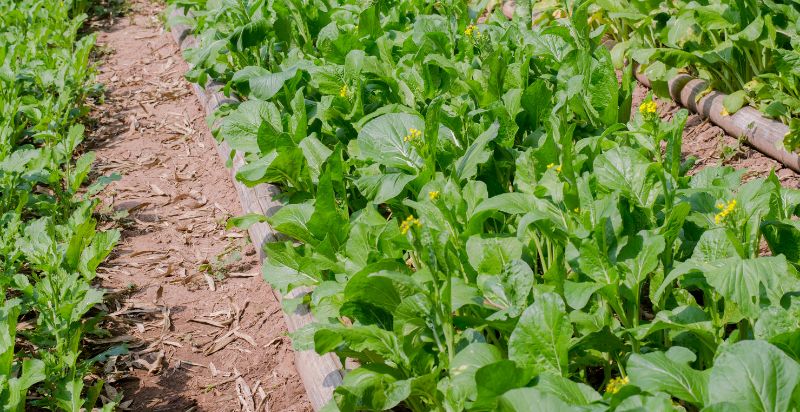
Caring for Mustard Plants:
Once your mustard plants have grown past the seedling stage, you can thin out some weaker ones so that only the healthiest plants remain in each row. This will give them more room for healthier growth and prevent overcrowding.
If your soil is sandy and prone to drying out quickly, consider mulching around your mustard plants with organic material such as straw or grass clippings. This will help keep the soil moist and suppress weed growth. It’s also important to water your mustard plant regularly throughout the growing season, especially during dry periods.
As the flowers of mustard plants begin to appear, try pinching off their tips to encourage bushier growth and more flowers. Finally, add a layer of compost before winter arrives to give the soil an extra boost of nutrients for next year’s crop.
Mustard can be harvested once it reaches its full maturity, which usually takes about 4–6 weeks after sowing. Carefully pull the plants out of the ground and cut off their leaves and stems at the base. You can then hang the plants in a cool, dry place to allow them to dry fully before storing or using them.
Mustard is an incredibly versatile crop used for many culinary and medicinal purposes. With just a bit of care and attention, you’ll be able to enjoy your mustard harvest from your very own garden.
How to Care for and Grow Mustard?
Mustard plant require at least 6 hours of direct sunlight a day and prefer light, well-drained soil with plenty of organic matter. For best results, prepare the soil by digging in compost or aged manure before planting to help ensure optimal growth. When sowing mustard seeds, spread them over the surface of the soil and press down gently with your hand or a rake to ensure they are in contact with the ground. If you’re planting in rows, keep each seed about 6 to 9 inches apart and space each row 18 to 24 inches apart.
Once your mustard plant have germinated, it is important to thin out some of the weaker ones so that only the healthiest remain. This will give them more room to grow and also help prevent overcrowding. For sandy soils prone to drying out quickly, consider adding a layer of mulch around your mustard plant with organic material such as straw or grass clippings. This will help retain moisture and suppress weed growth.
Regular watering is also necessary for optimal plant health, especially during dry periods. If you wish to encourage bushier growth and more flowers, pinch off their tips as soon as they appear. Finally, don’t forget to add a layer of compost before winter arrives to give the soil an extra boost of nutrients for next year’s crop.
Consult your local gardening center or online resources for more in-depth advice on growing and harvesting mustard. There you can find specific tips and tricks tailored to your region, climate, and mustard plant varieties. With a little knowledge and effort, you’ll be sure to have success with your very own mustard crop.
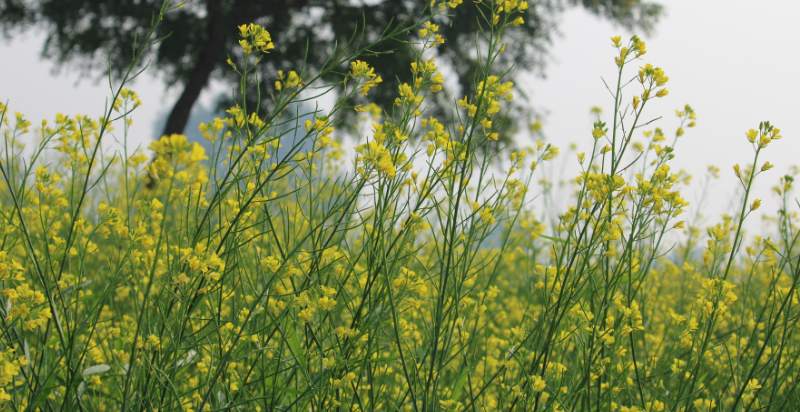
Preventions from Pests and Diseases:
Mustard plants are relatively resistant to most pests and diseases, but there are a few that you should be aware of. Watch out for aphids which can cause stunted growth and yellowing of the leaves. To help prevent infestation, ensure your mustard plants get plenty of sunlight and air circulation and trim away any damaged or diseased foliage. Additionally, avoid overhead watering to keep fungal issues at bay. If you see signs of disease, removing affected areas is important to prevent them from spreading.
To encourage an even healthier crop of mustard plants, use companion planting techniques such as planting onions near them to deter pests or interplanting with other vegetables like broccoli or cauliflower, which will help provide shade and add essential nutrients back into the soil. With these simple preventative measures, you’ll be able to enjoy a lush and healthy mustard harvest.
How to Harvest Mustard?
Harvesting mustard greens is similar to harvesting other leafy green vegetables, such as kale and collard greens. The best time to harvest is when the leaves are still young and tender. To harvest, use scissors or gardening shears to snip off the mature outer leaves from the base of the plant. Leave several inches remaining so the plant can continue to grow.
Repeat the process every few weeks until the weather turns cold and growth slows down. You can also harvest mustard seeds for cooking or sprouting by letting the flowers mature and go to seed. Once they are dry, rub them off their stems and collect them in a bowl or paper bag.
When harvesting mustard, it’s important to wait until the leaves fully mature and have turned yellow-green. This usually takes between 4-6 weeks after sowing. Once ready, carefully pull the plants out of the ground and cut off their leaves and stems at the base. Hang them in a cool, dry place for about 2 weeks to allow them to dry before storing or using them fully. When properly harvested and stored, mustard can last up to 6 months.
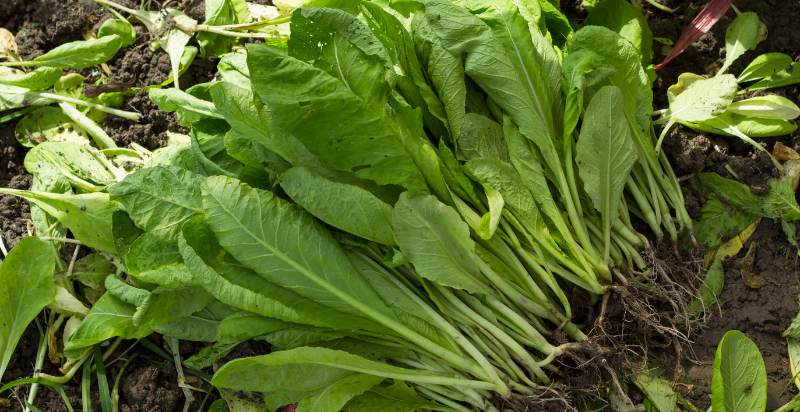
How to Store Homegrown Mustard?
Mustard seeds can be stored in cool, dry places. Make sure to keep them away from moisture and direct sunlight, as this will cause the mustard to spoil more quickly. An ideal storage area would be a pantry or cupboard with no windows. It is especially important to store homegrown mustard away from air-borne contaminants such as dust and dirt.
To ensure maximum freshness, it is best to store homegrown mustard in an airtight container such as a mason jar or plastic bag. This will prevent oxidation and evaporation, which can degrade the quality of the mustard over time. If you wish, you can also add some salt to help preserve the flavor of your homemade mustard for longer periods. Be sure to label each container with the date you prepared it, so you can track when it should be used.
With the right storage methods, your homegrown mustard will stay fresh and flavorful for months.
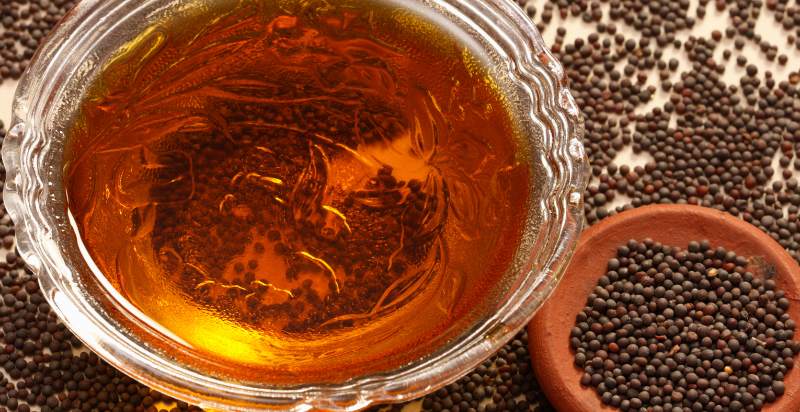
How to Use Homegrown Mustard Differently?
Mustard can be used in many ways beyond topping hot dogs and sandwiches. Here are some ideas for using homemade mustard to add a unique flavor to your dishes:
- Add it to dressings or marinades for extra zing
- Mix it into mashed potatoes, scrambled eggs, or other savory dishes for added depth of flavor
- Use it as a dip for raw vegetables such as carrots and celery
- Make a spicy mustard sauce by combining equal parts mustard with mayonnaise or sour cream
- Spread it onto fish before baking or grilling for a delicious mustard crust
- Use it instead of traditional ketchup on burgers and fries
- Blend it with softened cream cheese for a savory spread
- Make a simple glaze by combining equal parts mustard with honey or brown sugar and brush it onto meats before baking or grilling.
Whatever you decide, homemade mustard will add an extra layer of flavor and pizazz to your dishes.
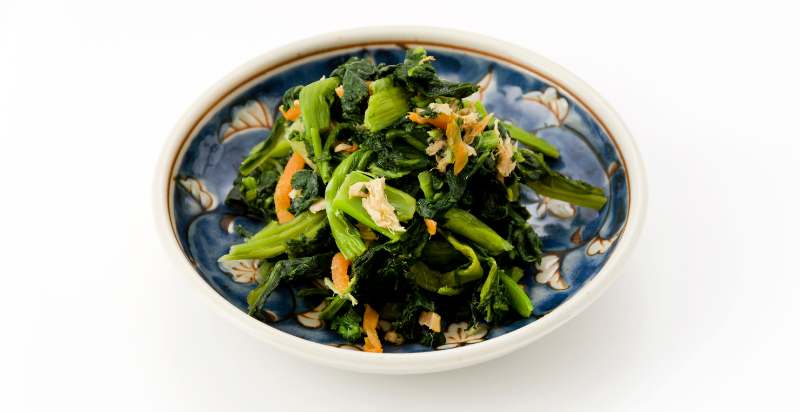
Potential Risks from Mustard:
Mustard is generally considered safe to eat in moderation. However, it can have potential side effects. Mustard contains compounds such as glucosinolates and myrosinase, which are toxic when eaten in large amounts and can cause digestive issues.
Additionally, some people may be allergic to mustard or its components, so it’s important to check with your doctor before consuming it for the first time. Furthermore, many store-bought mustards contain added preservatives and artificial ingredients, which may not agree with everyone. To reduce these risks, opt for organic or homemade mustards that don’t contain any unhealthy additives.
Conclusion:
Mustard is a tasty and versatile condiment that can be grown in your garden. With the right harvesting and storage methods, you can enjoy homegrown mustard for several months after harvest.
With proper harvesting, storing, and usage of homegrown mustard, one can enjoy its taste for many months after harvest. It is important to remember that it should be done responsibly, as high amounts of certain compounds present in mustard are toxic if ingested and may cause digestive issues or allergic reactions. When using mustard in any form, it is best to opt for organic or homemade versions which do not contain unhealthy additives.
Be sure to store it properly to ensure maximum freshness and flavor. And be mindful that consuming too much mustard could lead to health risks such as gastrointestinal distress or an allergic reaction. You can enjoy all the delicious benefits of homegrown mustard with the right precautions.
- Everything You Wanted to Know About Red Tamarillos - June 2, 2025
- A Guide to Tulips: Everything You Need to Know & More… - June 2, 2025
- Guanabana: Description, Flavor, Benefits, And Uses - May 27, 2025

2 thoughts on “What is Mustard? How to Plant, Grow, and Harvest Mustard Greens ”
Comments are closed.